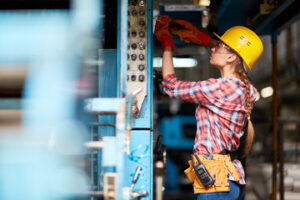Deck building can transform even the smallest outdoor spaces. Today, modern homes often lack wide open yards. That doesn’t mean outdoor living should be sacrificed. With clever planning, even compact spaces can house a stylish and practical deck.

A smart approach begins with evaluating the home’s architecture. This ensures the deck complements the house’s design. It also prevents a cluttered or disjointed look. A seamless transition enhances both aesthetics and function. Contact Deck Builders Charleston SC for professional help.
Maximizing vertical space is a growing trend in small deck designs. Installing trellises or vertical gardens adds greenery without eating floor area. Elevated planters, hanging furniture, and slimline railings are also helpful. These create openness while supporting privacy.
Modular deck components are gaining popularity. They offer flexibility for future upgrades or reconfiguration. Homeowners can scale the structure over time. This appeals to those with evolving needs or limited budgets.
Multi-level decks are not just for large properties. Compact versions add interest and utility to small footprints. A two-step transition can delineate lounge and dining areas. Levels also help adjust to sloped terrains without major excavation.
Sustainable materials continue to shape deck trends. Composites made from recycled fibers are long-lasting and low-maintenance. Locally sourced wood helps reduce environmental impact. Using eco-friendly finishes keeps harmful chemicals away from gardens.
Weather-responsive decks are emerging in contemporary builds. These feature retractable awnings or foldable covers. The space adapts to sun or rain easily. Automated systems can be integrated for added convenience.
Deck lighting is becoming more integrated and smarter. Subtle LED strips, solar-powered fixtures, and motion sensors enhance safety. They also create ambiance after dark. Smart lighting can sync with voice or app controls.
Furniture selection can make or break a small deck. Built-in benches with hidden storage serve dual purposes. Fold-down tables and stackable seats save space. Pieces should be durable, lightweight, and easy to rearrange.
Material contrast creates visual depth in a deck. Mixing wood with metal or stone provides texture. This avoids a flat and monotonous look. Contrast also defines zones without using physical dividers.
Decks designed for wellness are on the rise. Homeowners now treat decks as extensions of self-care spaces. Yoga zones, meditation corners, or herb gardens appear more often. These features elevate outdoor time into rejuvenating rituals.
Water features now appear in compact decks as calming focal points. Small fountains or wall-mounted spouts require minimal space. The gentle sound masks traffic or city noise. They also increase the sense of tranquility.
Fire elements bring both functionality and mood to decks. Compact fire pits or tabletop heaters extend usability into cooler seasons. They also create a cozy gathering point. Safety features should always be prioritized in these designs.
Smart storage solutions increase deck usability. Hidden compartments beneath seating or stairs maximize every inch. Vertical shelving can hold plants or tools. Minimalism remains the key to keeping things tidy.
Glass railings create an illusion of space. They offer unobstructed views while maintaining safety. Frameless designs work best for sleek modern styles. This approach also enhances natural light on the deck.
Color psychology is essential in deck aesthetics. Lighter tones visually expand the area. Earthy hues promote calm and blend with nature. Accents in bright colors add energy without overwhelming.
Decks built around trees or natural elements feel more connected to the environment. Instead of removing large trees, decks now incorporate them. This preserves shade and enhances visual appeal. It also reflects eco-conscious values.
Floating decks offer flexibility in unconventional settings. They are ideal for yards where digging isn’t possible. These platforms can be repositioned or resized. They’re especially popular for renters or temporary builds.
Climate-specific deck planning ensures long-term performance. In humid areas, materials must resist mold and warping. In cold zones, anti-slip finishes are vital. Customization reduces long-term maintenance.
Noise reduction is now a key concern in urban decks. Adding green barriers, water features, or acoustic panels helps. These create a peaceful ambiance. They’re especially helpful for city dwellers seeking respite.
Privacy solutions have become stylish and subtle. Laser-cut screens, slatted wood walls, and plant walls protect solitude. These also function as decorative elements. Mixing materials enhances aesthetic flexibility.
Wireless connectivity is often integrated into modern decks. Outdoor outlets, Wi-Fi extenders, and Bluetooth speakers support remote work or entertainment. People want their decks to match indoor tech comfort. Weatherproofing is essential for all installations.
Decks now serve multiple functions beyond relaxation. Some decks include workout zones, play areas, or outdoor kitchens. These transform a deck into a multifunctional hub. Space-saving furniture supports diverse uses.
The concept of micro-decks is becoming popular in dense housing areas. These ultra-small decks fit balconies or narrow side yards. Even two chairs and a small table can define the area. The key lies in proportion and smart design.
Maintenance-friendly designs are favored by busy homeowners. Composite materials, stainless hardware, and smooth finishes require less care. Integrated drainage systems prevent pooling and staining. These decisions save time and cost long term.
Some decks are built with mobility in mind. Ramps, wider pathways, and ergonomic seating support accessibility. This makes the space welcoming for all ages. It also anticipates future needs of the household.
Seasonal adaptability is crucial for year-round enjoyment. Pergolas with removable covers, heated floor mats, or insulated seating make this possible. The goal is to extend comfort into cooler or wetter seasons. Adaptability increases the deck’s value.
Solar integration is a forward-thinking move. Panels can power lighting, fans, or small appliances. Some designs include battery backups for outages. This brings sustainability full circle into outdoor living.
Decks now increasingly blur the line between indoor and outdoor living. Sliding glass doors, matching flooring, and seamless thresholds support this. The result is a continuous flow of space. It improves movement and interaction.
DIY deck kits attract homeowners who enjoy hands-on projects. These pre-measured components simplify the process. Instructions cater to beginners while allowing customization. This democratizes access to stylish outdoor living.
Design apps and AR tools help plan a deck virtually before construction. These platforms visualize finishes, layouts, and furniture. This reduces design errors and costly changes. It also boosts homeowner confidence in decisions.
Rainwater harvesting systems are now built into deck designs. Channels direct water to underground tanks or garden beds. This supports sustainability and reduces runoff. It also helps maintain lush surrounding landscapes.
Child-friendly decks prioritize safety and engagement. Rounded edges, gated entrances, and soft mats protect young users. Activity zones like sandboxes or art walls add fun. These features foster family bonding outdoors.
Pet-conscious designs include scratch-resistant surfaces and shaded lounging spots. Some decks include feeding stations or ramp access. Pets are part of the household and deserve consideration. Designs must account for their comfort and safety.
Lighting now serves both form and function in deck aesthetics. Recessed step lights prevent accidents at night. Lanterns and string lights create mood. Solar-powered options appeal to eco-conscious owners.
Thermal performance plays a bigger role than before. Heat-resistant finishes and reflective surfaces maintain comfort. Light-colored materials stay cooler underfoot. These choices are vital for summer enjoyment.
Smart irrigation keeps greenery vibrant without effort. Drip lines and timers can be hidden under decking or planters. Proper hydration reduces plant stress. This ensures lush, healthy outdoor decor.
Eco-conscious decks often include recycled rubber pads or bamboo elements. These are renewable, durable, and less resource-intensive. Homeowners are more aware of material origins. This influences their purchasing decisions.
Deck shapes are becoming more fluid and less boxy. Curved outlines and asymmetrical edges add visual softness. This breaks the monotony of traditional rectangles. Organic shapes also echo nature more closely.
Architectural accents are making decks more expressive. Pergolas, lattice screens, and tiered platforms add flair. These aren’t just for looks—they enhance usability. Designers combine creativity with purpose.
Outdoor workstations are now integrated into deck designs. Foldable desks, shade covers, and Wi-Fi help remote workers. This creates a refreshing change from indoor offices. Productivity rises with natural light and fresh air.
Low-voltage lighting ensures efficiency and safety. These systems consume less energy while offering enough brightness. They’re ideal for highlighting paths, steps, and railings. Homeowners appreciate both savings and ambiance.
Wind protection is often built into open decks. Clear screens, tall planters, or partial walls help reduce gusts. This maintains comfort and decor placement. It also ensures conversations and activities remain uninterrupted.
Cultural aesthetics now influence deck styles. Elements inspired by Zen gardens, tropical huts, or Nordic retreats appear. This adds personality to the structure. It also connects homeowners with travel or heritage.
The resurgence of natural finishes shows a desire to reconnect with nature. Unpainted wood, stone textures, and woven fibers dominate. These finishes feel grounded and organic. They age gracefully with minimal treatment.
Temporary decks cater to renters or nomadic lifestyles. Lightweight materials and non-invasive installations define them. Some can be disassembled and moved easily. This offers flexibility in changing environments.
Decks with built-in smart sensors can detect rain, heat, or foot traffic. These systems trigger covers or lights accordingly. They offer a glimpse into futuristic living. Automation boosts comfort and energy use efficiency.
Nightscaping integrates lighting and landscaping into a single concept. The result is a deck that glows with natural harmony. Plants are highlighted artistically under warm light. This transforms decks into evening sanctuaries.
Minimalist decks prioritize clarity, open space, and essential features only. Clean lines, muted colors, and clutter-free layouts define them. This aesthetic appeals to modern sensibilities. It promotes relaxation and mental clarity.
Sound systems built into planters or benches preserve aesthetics. Invisible speakers maintain a clean deck design. Audio zones can be customized per deck section. This supports both solo enjoyment and group gatherings.
Deck evolution reflects how people live, relax, and socialize today. It is no longer just a wooden floor outdoors. It has become an intentional space that reflects lifestyle and values. Future decks will continue adapting with emerging needs and technology.Tools

